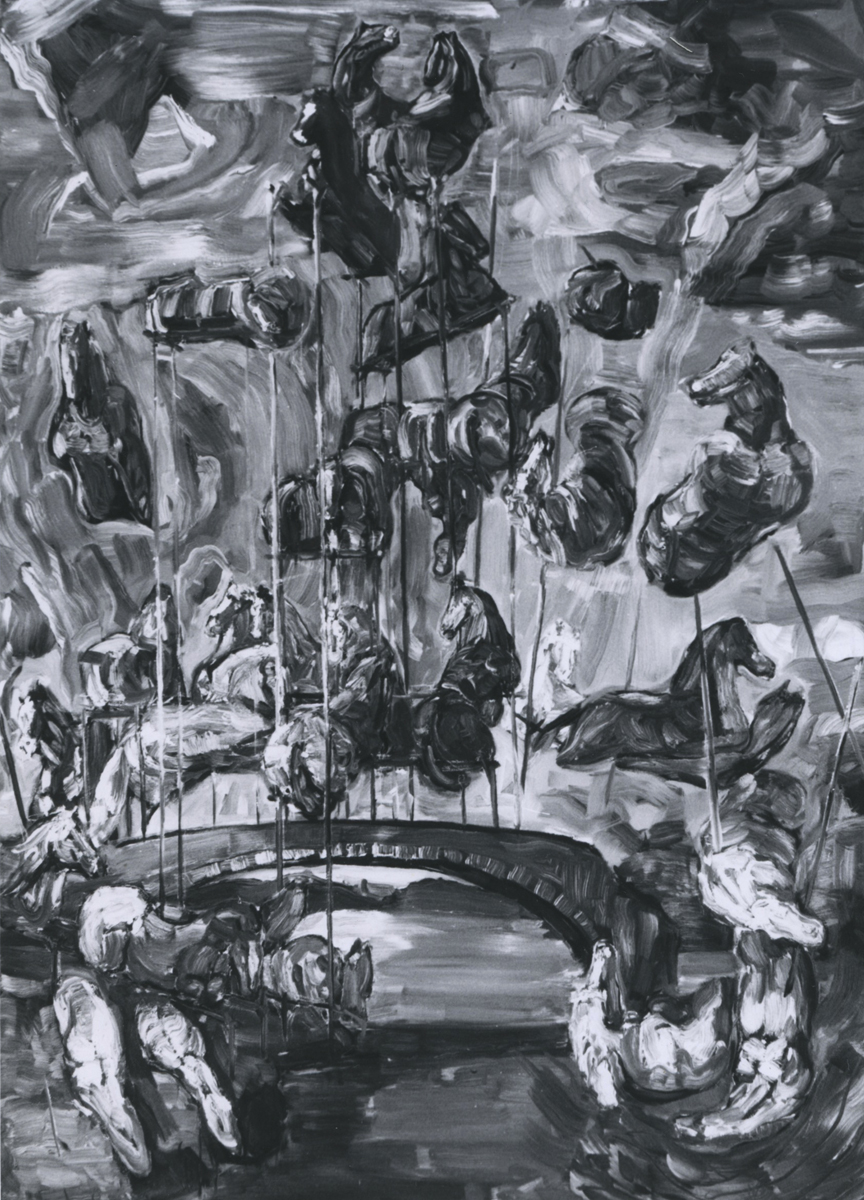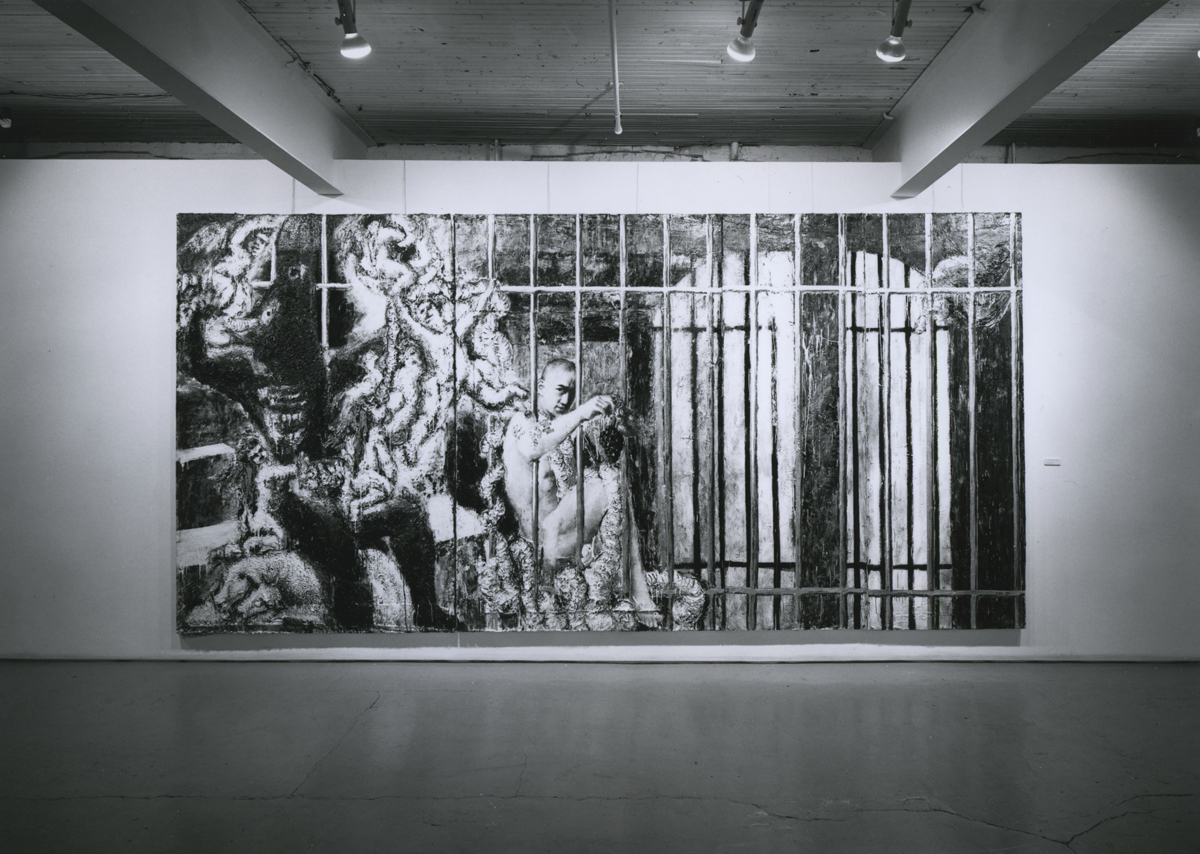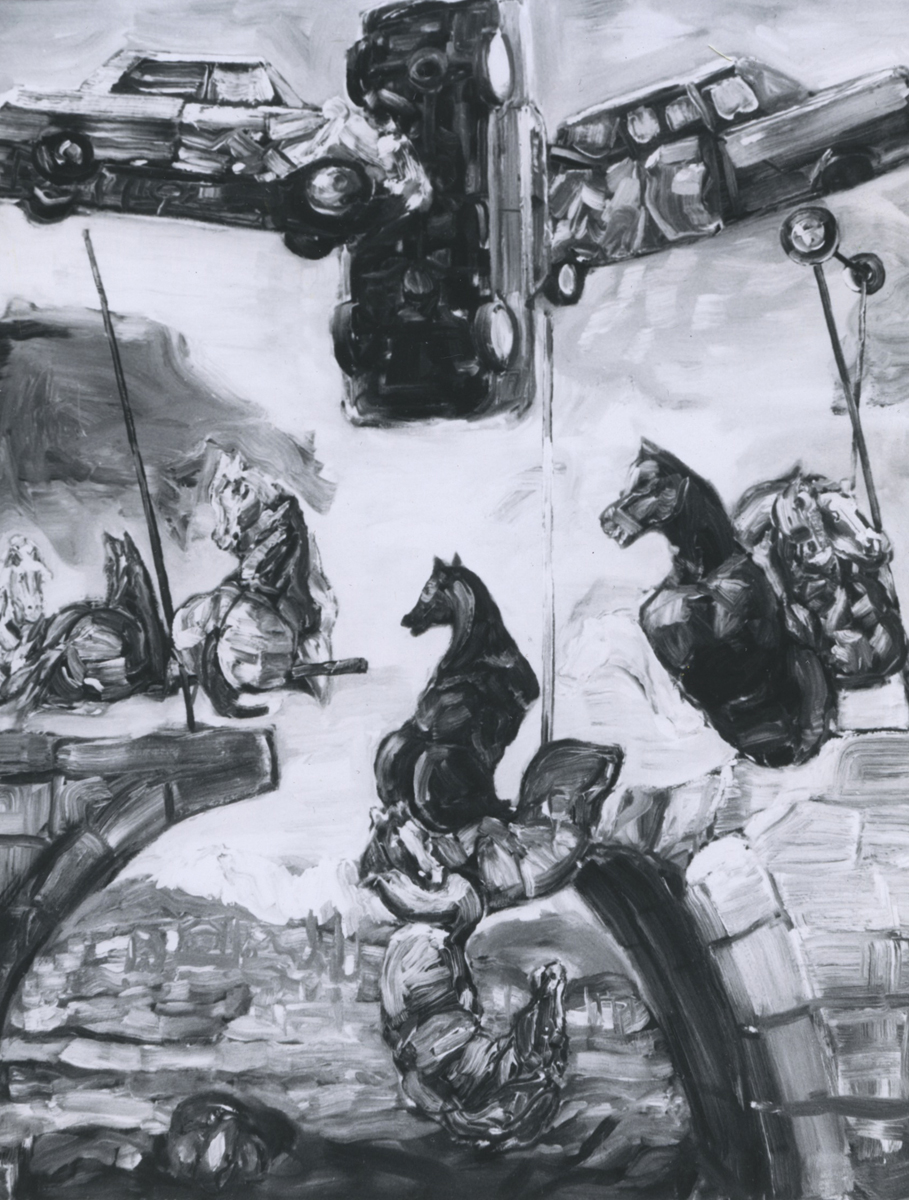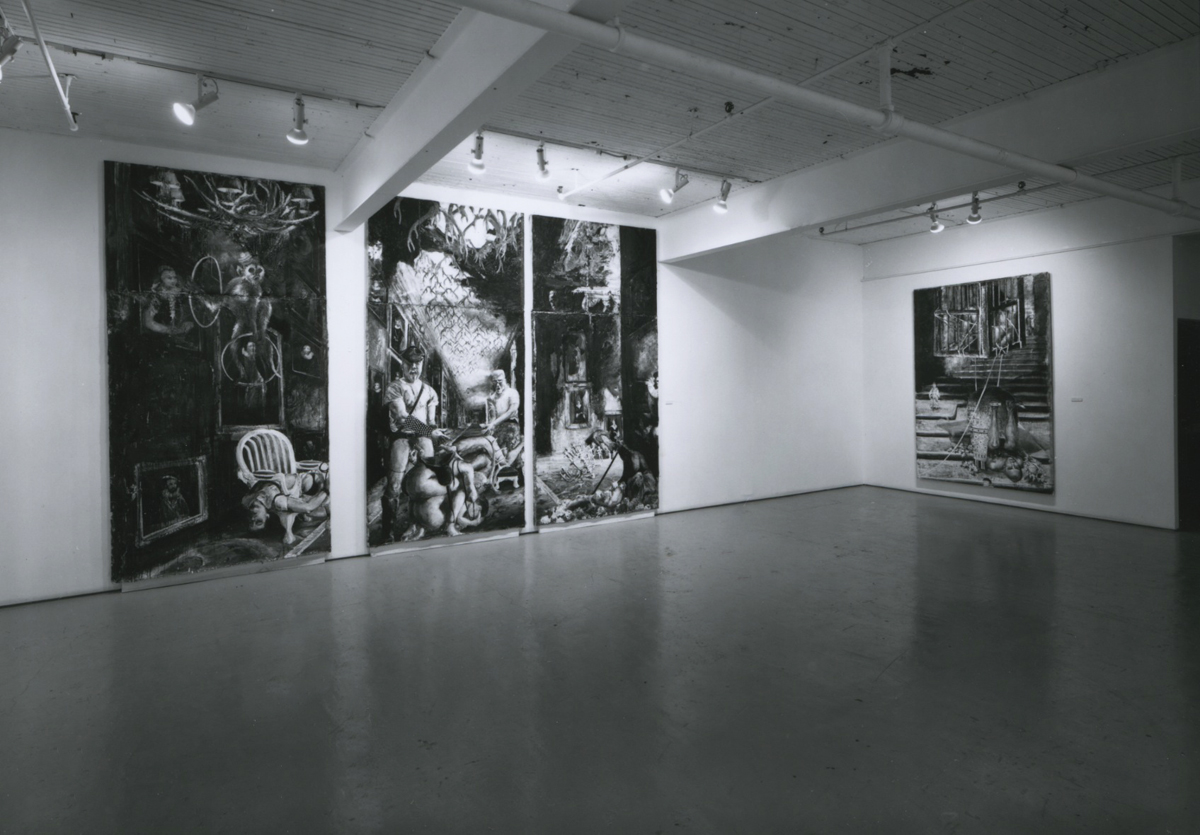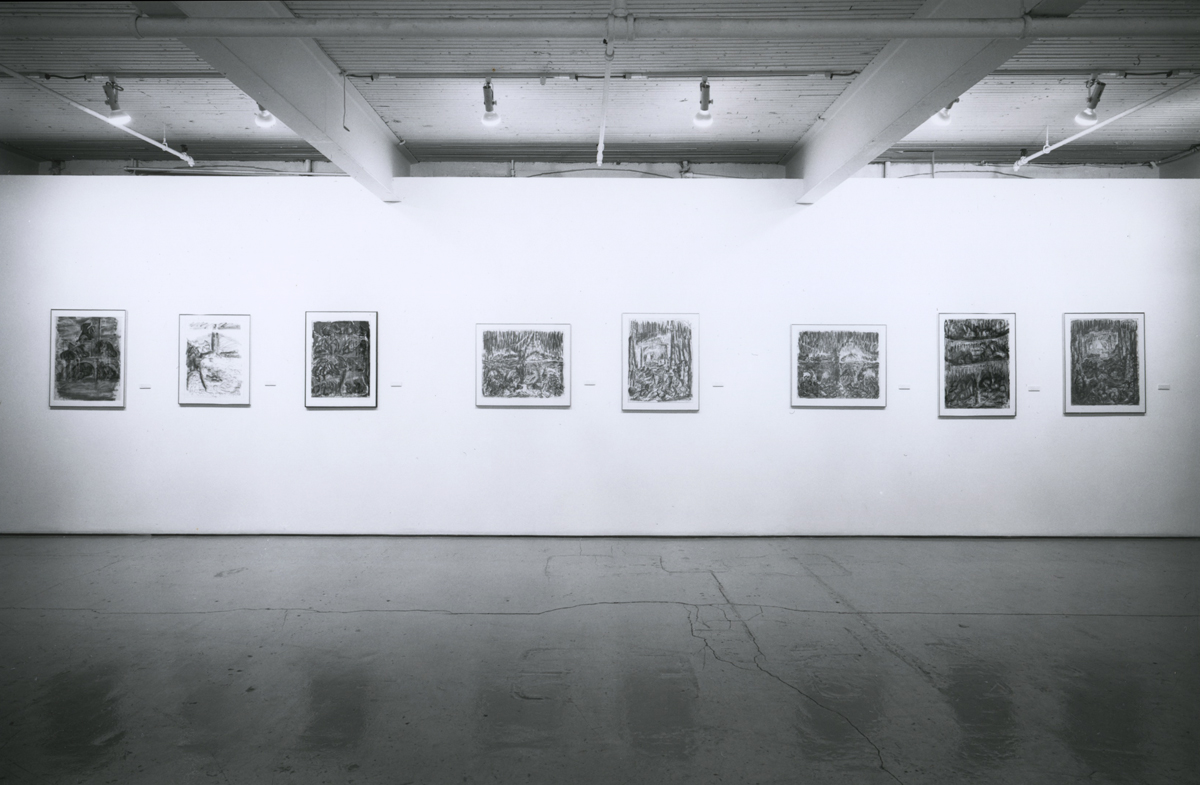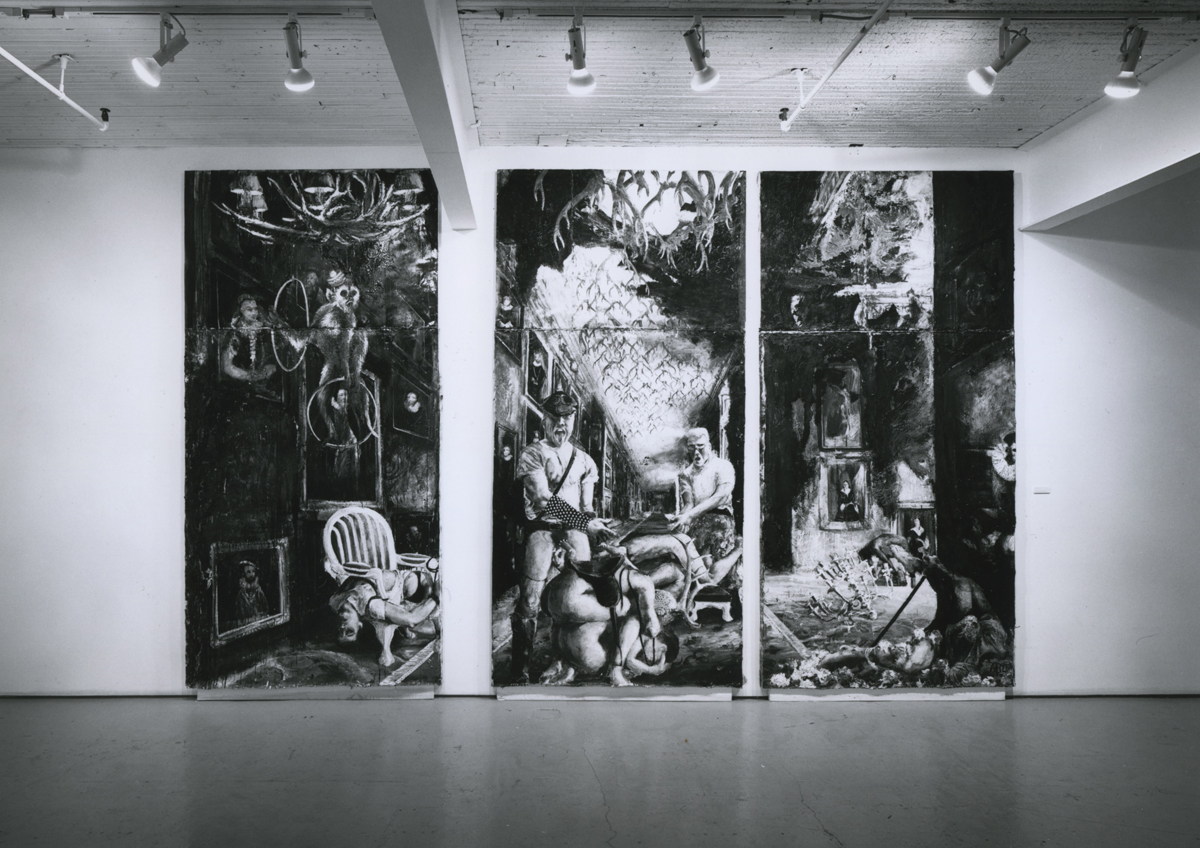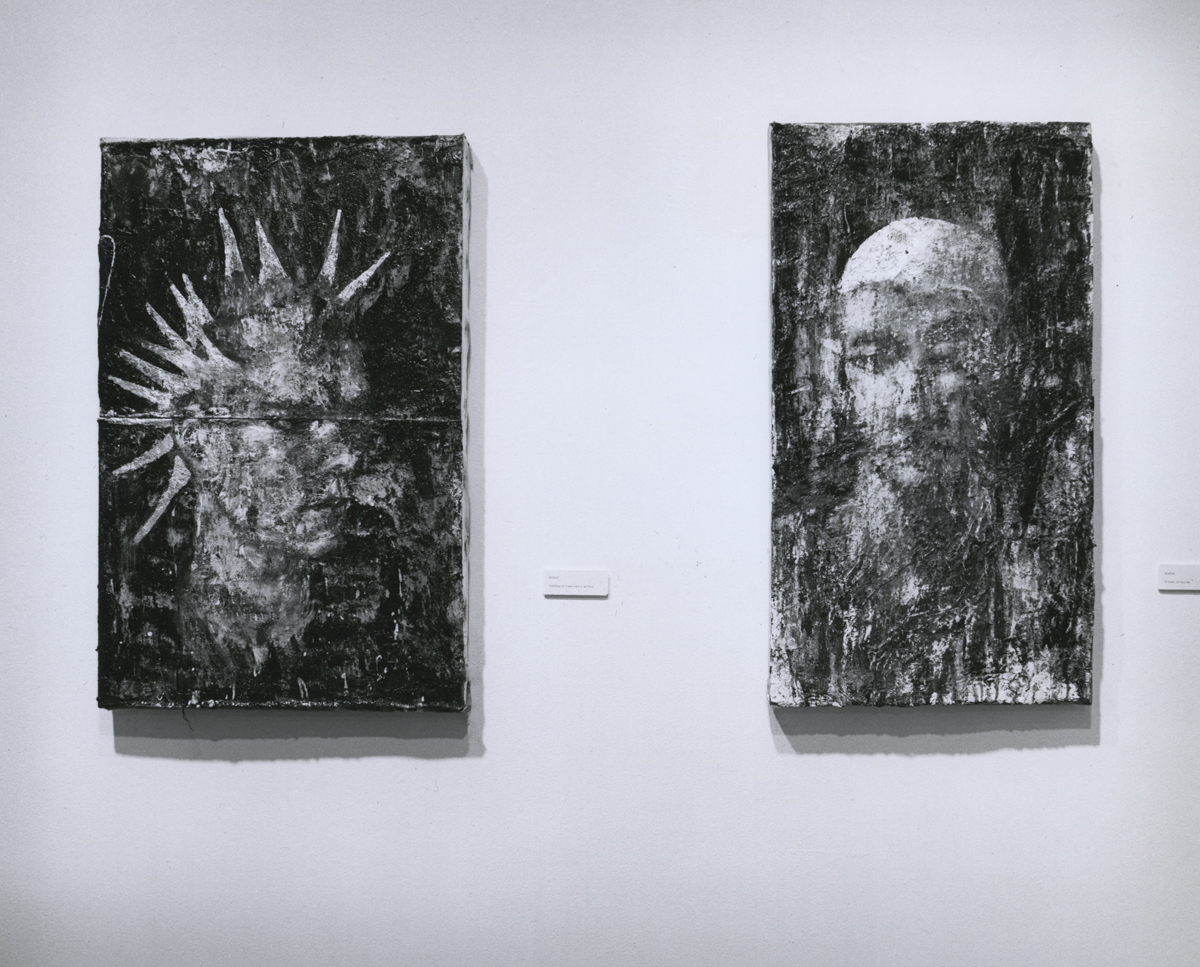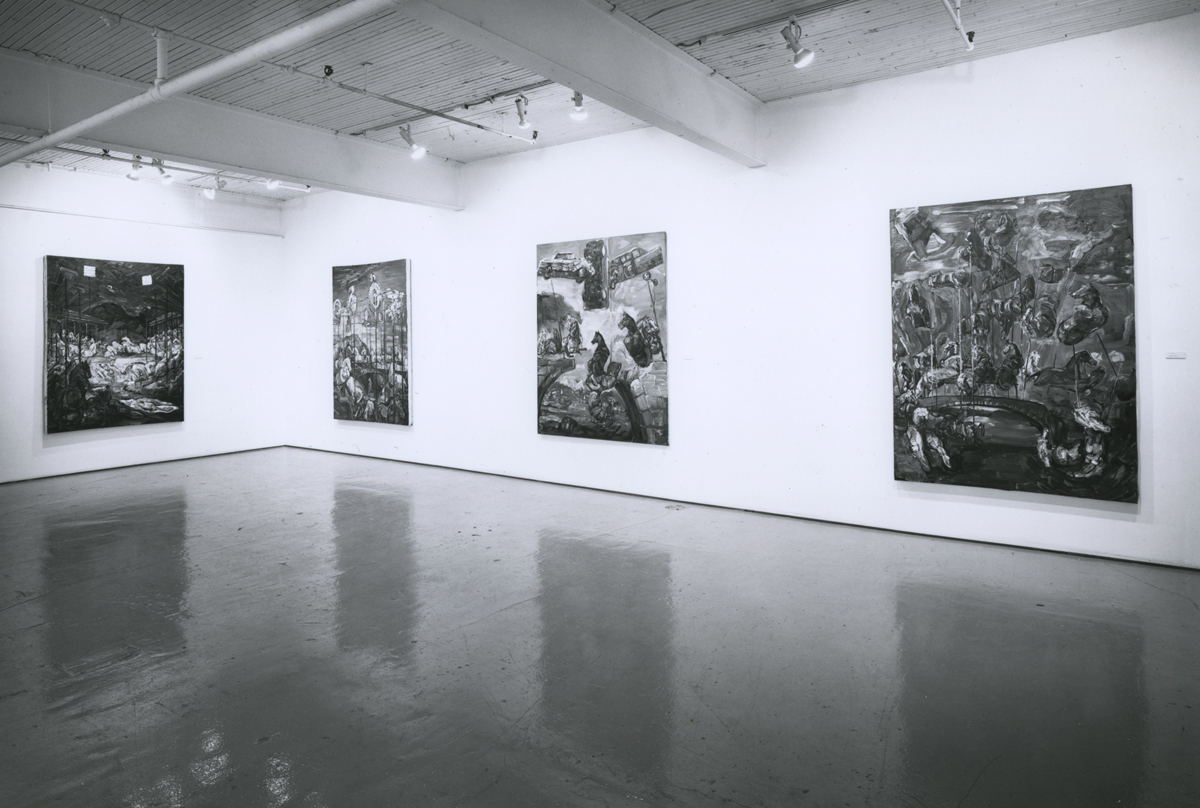On September 9th at 8:00 p.m., two solo exhibitions of paintings by Vancouver artists Attila Richard Lukacs and Charles Rea will open at Mercer Union.
Although Attila Richard Lukacs and Charles Rea have been exhibiting their work in Vancouver for several years, they are especially recognized for their participation in Young Romantics, a major painting exhibition at the Vancouver Art Gallery in 1985. Young Romantics received a great deal of critical acclaim, catapulting Lukacs, Rea and six other Vancouver artists to the forefront of the West Coast's contemporary art scene.
Attila Richard Lukacs fuses an almost classical style of painting with gritty and raw brushwork reminiscent of the abstract expressionists. Oil, enamel and tar drip down the canvas creating a rich surface quality in his work. Borrowing from Caravaggio's Bacchus and minotaurs from Picasso, Lukacs' paintings are imbued with highly sexual imagery which has been the focus of much recent controversy surrounding his work.
In Charles Rea's work exhibited in the Young Romantics exhibition, hardcover books mounted on plywood served as a base for his paintings of cathedral and museum interiors. For Rea, the inner chambers of these elaborate cathedrals have their parallel in the human interior, as reflected in the title, Tissue of the Soul. For this exhibition at Mercer Union, Charles Rea is exhibiting a new series of paintings which trace back to the traditions of epic painting of the 18th and l9th centuries.
Both Attila Richard Lukacs and Charles Rea will be present for the opening at Mercer Union.
Four Painters: Who's Hot and Who's Not
John Bentley Mays
Globe And Mail September 1986
AS A HOT MEDIA phenomenon, the new expressionist painting that emerged in North America and Europe during the last half-decade is nowadays a shadow of its former self. All the amazing fortunes have been made, by a mere handful of painters and their dealers in New York and Europe. The glamor-mag spreads on switchblade-toting graffiti artists and surly American-Guy painters have all been published. The minds of most trend-setting and trend-conscious) curators and critics now appear to be fixed upon other things--the art of cultural and sexual politics, neo-conceptual photography and installation, and so forth -- anything but brushy, scruffy, new-fangled oil painting.
Despite this abrupt shift in art world attention, however, a notable number of new Canadian painters have pluckily refused to roll over and play dead, and have kept on working with the old stuff and clutter of painting as though not very much has happened. This is an account of new painting by four artists tacking (with varying success) into the art world's prevailing wind. All currently have exhibitions in Toronto galleries.
Atilla Richard Lukacs and Charles Rea: new paintings and drawings, at Mercer Union, 333 Adelaide St. W.. 5th Floor. to Oct. 4.
Lukacs and Rea, along with six other new painters, were abruptly boosted into national attention and considerable local notoriety by a single show last year at the Vancouver Art Gallery, VAG curator Scott Watson's Young Romantics. The exhibition of recent work at Mercer Union by Lukacs, still a young romantic at age 24, and Charles Rea, a fairly young one at 34, marks the Toronto debut of both artists.
The art on view is the kind of stuff loved by lurid tabloids, hated by the political neo-Conceptualists, and viewed with mixed caution, alarm and fascination by art critics. There is just so much here to see: volcanic wastelands of tarry black paint, expanses of sumptuous color, horrifying sado-masochistic tableaux, yards of exquisite brushwork, dollops of fantastic vulgarity, shameless borrowing and striking originality, dozens of hits, scores of misses, ugliness galore, and moments of extraordinary intelligence and beauty.
Lukacs' huge paintlng entitled Like That (1986) combines everything marvelous and horrible about this new Vancouver painting. Centre-stage in a vast baronial hall hung with rows of dusty old-master paintings, a complex sadistic performance appears ready to take place. The painting churns violently around this narrative centre, shattering into numerous points of enthrallment--a scatter of sweet, decaying roses; a rabid monkey in an organ-grinder's cap; a field of tortured, smokey tar. The work finally collapses under the weight of extravagant ambition, but not before convincing us of Lukacs' great promise as a painter of apocalypse.
Charles Rea's sumptuous compositions in oil, and his strong drawings, are more modest than those of Lukacs, and more disciplined in their application of materials. Their unity consists in their intellectual proposition--which has to do with art-historical questions of depiction --but is expressed in richly worked color and insistent, involving paint work. Rea is no more a liberal humanist than Lukacs- both seem firmly rooted in the long Vancouver tradition of visually excessive, sexually obsessive, high-voltage art making. Toronto the Good has never seen anything quite like it.
'I Want To Paint The Human Struggle'
John Bentley Mays
Globe and Mail, September 1986
Sitting in the dark with Atilla Richard Lukacs, part one: The Slide Show.
Rick, as he's known to his friends in Vancouver's new painting scene, is a Young Romantic. Because he received a spectacular debut last summer in a painting show at the Vancouver Art Gallery called Young Romantics, just a few weeks after graduating from Vancouver's Emily Carr College of Art, Lukacs is probably doomed to be known as a Young Romantic until he is old.
But nowadays, he's young, and very much into the role of the Darkly Troubled Romantic, Young Adult Department.
Twenty-three, tall, pale and dressed in Young Romantic alta moda--beret spangled with sequins, white go-go boots, festoons of rosaries and Jesus kitsch around his neck, a T-shirt from a San Francisco heavy-leather shop--Lukacs provides a running commentary as the slides flash up on the darkened wall of the office of his dealer, Diane Farris.
Some 1983 pictures depicting hanging haunches of raw meat slabs of what looks like lacerated animal flesh. A crucifixion of beef.
"It was influenced by Grunewald," Lukacs says. "Meal was the first thing I did at art school. I went to school, and I was ready to quit. Art school is a haven for rich kids who do not know what to do. Then the dean suggested I go down to the market, and the first thing I did was the butcher's counter. Meat really kept me interested in painting--the meat, the fat, the texture--and it was really fun doing it." The figure of a plucked chicken, surrounded by a fuzzy storm of real chicken feathers, stuck to the paint surface.
"It's feathers, tar, enamel," Lukacs says. "I had stopped doing meat, and was looking around."
Violent pictures of minotaurs who have been disemboweled, wounded. etc. A salad of Picasso, kinky Fellini movies, trendy Italian paint-gushing as seen in Flash Art magazine, etc. Lukacs lingers over one slide of a minotaur picture he likes especially.
"It took me only a few hours to do," he says, "and I think it is one of my strongest paintings. This is one Robin told me to save. Robin Mayor the principal at Emily Carr--was a father figure. Not so much the way he taught, as the way he was. He developed a sense of self-confidence in me. But I did not like the teachers. They were so stifling. I pity anyone taking painting there now."
A large painting of a man behind prison bars, and a minotaur, its guts spilling out, placed ambiguously in front of and behind the bars.
"My most autobiographical painting to date,'; Lukacs says. ' I was in jail for five days over Easter (1985), in city jail. It was awful, there was nothing to read, and only beans on rice. Jail could be an object of sexual desire, but not in this case. There is a lot of romanticism about jail, what it is to be in jail, but not in this case."
A painting depicting a turmoil of blood and roses, a nude figure with a devil's mask strapped to his rear, crawling up steps; a woman being engulfed by what looks like a lot of gooey pasta. It's called Easter.
"Some people hide behind the mask of fear, of God, of Christianity," Lukacs says. "It's a fearful person crawling up the stairs of penance. Pain and suffering, pain and suffering. It is a very liberal time, but I am still fascinated by guilt, pain, humiliation, which I juxtapose with sexual guilt pain and humiliation."
A quick sequence of recent collages and drawings featuring kitsch religious icons cartoons, pictures snipped out of newspapers, much sadomasochistic pornography, leather, straps, and so forth.
Sitting in the dark with Atilla Richard Lukacs, part two: interview with a Young Romantic.
Q: The flipping between Picasso and porn. the sincere-style brushstrokes and so on... it looks so predictable, given the glut of neo-expressionist painting we've seen in the art magazines over the last few years.
A: Vancouver is just catching up on something that's dying out elsewhere. Because of the Young Romantics show, there's alot of attention to young painters here. People are saving Wow! Maybe that could happen to me . . .
You can't help being conscious of what is going on. You are bombarded by every magazine.
Q: Why do you paint?
A: Searching and searching for something now. Painting is like that, it raises issues, it does not answer questions. At 23 I am very young, I tend to paint pictures of my sexuality. Maybe 40 years down the road ultimate painting may be an oak tree, the culmination of all my painting. I am not interested in political issues. I am working at a much wider personal level. I want to paint the human struggle, human pain.
Q: You used to be a rich kid, back in Calgary's version of the haute monde. Now you are Young Romantic. What next?
A: I am not going to characterize myself. I am not a neo-expressionist, neo futurist, neo-anything. I just want to paint. I will change my painting anyway my work requires it.
Q: But what will you do when the fashion changes, and the romantic painting fad evaporates?
A: In a while, it will not be fashionable to make painting the way you see It in New York. Painting has to get going here, but after that, the selection process is going to happen. But I won't be here. I don't want to exile myself in Vancouver, I'm planning to go to Europe. the Far East, Katmandu. I want to get out of fashionable art scenes. This atmosphere does not allow you room to fail. It's success, success, success. You have to get out, forget about selling.
Q: And the persistent imagery of heavy leather, bondage, imprisonment and so on. Will that remain?
A: It's a fact of human nature of psychology. It is there in Roman Catholicism-- painful crawling up steps, Iike a slave crawling to a master to lick his boots. I wasn't raised in a heavy Roman Catholic background, but I am fascinated by it-- it's the most interesting part of Christianity, the pain and suffering.
Sitting in the dark, conclusion.
In terms of his career, anyway, Lukacs appears to be feeling much less pain and suffering than the people in his pictures. His larger paintings are selling in the $5,000 range, and there's a lineup of West Coast collectors waiting for works as they become available. His first one-person show opens at the Diane Farris Gallery in April. His work, and that of his fellow YRs, will be featured later this year in group shows in Paris, London and Toronto.
